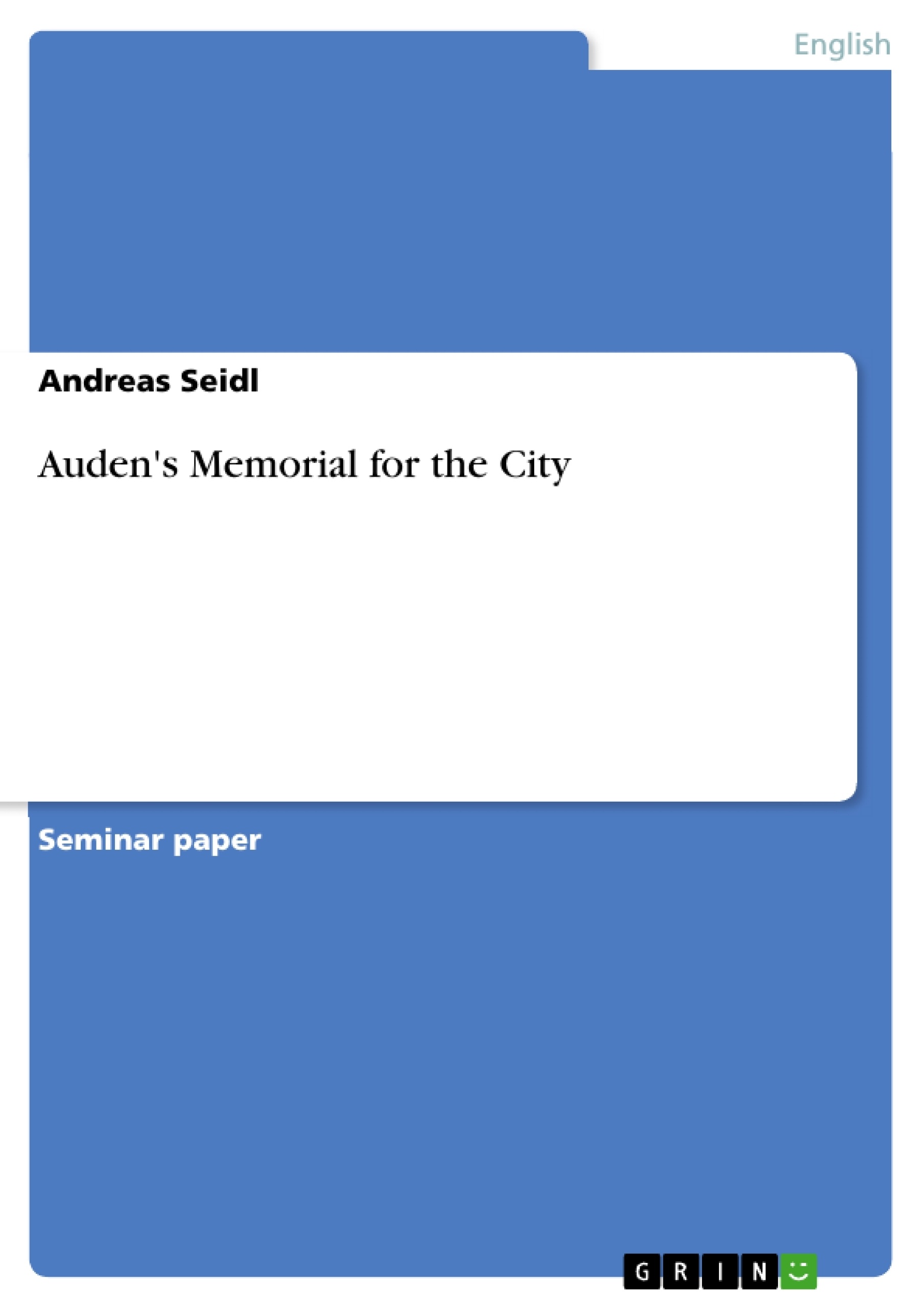The origins of a critical view on the focal points of civilizations may be traced back in history very
far. Perfect examples of ancient critique on urban life may be found in the Old Testament, e.g. the
depiction of the civilizations of Babel, Sodom and Gomorrah. The metaphorical content of these
examples seems fairly clear: the reader is confronted with societies that either directly challenge the
authority of God or don’t follow his Commandments and are therefore punished by a divine father
figure, which restores the natural and spiritual order. However, from the beginning, the city motive
may also be seen as well as a means of discourse on mankind’s cultural and social output. But
modern city poetry is of course different from the ancient accounts of God’s wrath, which lead to
catastrophes for one city or the other. Its roots are to be found in the works of major eighteenth
century poets, e.g. William Blake’s London, in which he seems to recognize a new form of disorder
being at work within the city limits. The nineteenth century brought forth poets like Wordsworth,
who carried on to work on the theme but showed a different attitude towards the city. Because of its
ever growing dimension, it was then perceived as a totally new and symbolic phenomenon, which
raised philosophical questions about the state of society and the poet’s role within this complex. The
tone of the responses to these questions was for the most part uncertain and personal. Finally,the
twentieth century gave birth to a new kind of urban literature and poetry, with a symbolic meaning
of the city motive, which was as varied as the ethnical, religious, social and political shades of the
human community it referred to. Nevertheless, two tendencies may be observed within modern
poetry and prose, the first one dealing with the content of the city symbol: “ ‘When the city ceases to
be a symbol of art and order,’ writes Lewis Mumford, ‘it acts in a negative fashion: it expresses and
helps to make more universal the fact of disintegration.’ “1 The second one is the mode major poets
such as T.S. Eliot in his famous The Waste Land attempt to cope with the reality of the twentieth
century city: a controlling framework of myth, literature and history is employed in order to deal
with the chaotic nature of their theme. Both points are to some extent true particularly for Auden’s
later works. [...]
1 Johnston (1984: 246).
Inhaltsverzeichnis (Table of Contents)
- 1. Introduction: A Concise History of the "City" Motive
- 2. Analysis of Basic Themes in Memorial for the City
- 2.1. The Introduction to the Poem
- 2.1.1. The Title
- 2.1.2. The Epigraph by Juliana of Norwich
- 2.2. Section I: Different Views on the World
- 2.2.1. The Naturalistic World of Homer
- 2.2.2. The War and the Camera
- 2.2.3. The Christian View: Redemption of the "Post-Virgilian City"
- 2.3. Section II: A Brief History of "Cities"
- 2.3.1. The "New City"
- 2.3.2. The "Sane City" and its Counterpart: The “Sinful City”
- 2.3.3. The Secular City
- 2.3.4. The "Rational City"
- 2.3.5. The “Glittering City" and the “Conscious City”
- 2.4. Section III: The Post-War, "Abolished City"
- 2.4.1. The Barbed Wire: Destruction and Division of Civilizations
- 2.4.2. The Image behind the Mirror: "Hope" and "Flesh"
- 2.5. Section IV: Redemption via the Body
- 2.5.1. The Voice of the Flesh: Examples of Weakness
- 2.5.2. Metropolis Fated: Rejection of Present Order and a Prophecy
- 3. Conclusions: Problematic Concepts and Open Questions
- The evolution of the "city" motive in literature
- The concept of the "city" as a symbol of human community and its complexities
- Auden's approach to the "city" as an abstract idea rather than a specific location
- The role of history and memory in shaping the "city" idea
- The interplay between the secular and the spiritual in Auden's portrayal of the city
Zielsetzung und Themenschwerpunkte (Objectives and Key Themes)
This paper aims to analyze the poem "Memorial for the City" by W.H. Auden, focusing on its central themes and their connection to the concept of the "city" in modern literature. The paper will explore the poem's historical context, tracing the development of the "city" motive through various literary works, and examine how Auden utilizes this concept to create a unique and abstract representation of human community.
Zusammenfassung der Kapitel (Chapter Summaries)
The introduction provides a historical overview of the "city" motive in literature, highlighting its evolution from ancient accounts of divine judgment to the modern interpretations of the city as a symbol of both human progress and societal decay. It emphasizes the unique approach of Auden, who aims to establish a concept of the "city" that transcends specific physical locations.
The analysis of basic themes within "Memorial for the City" examines the significance of the title and the epigraph by Juliana of Norwich. It explores the poem's portrayal of different perspectives on the world, including the natural, the technological, and the Christian. The paper also analyzes the poem's journey through a brief history of "cities," considering various conceptions such as the "New City," the "Sane City," and the "Rational City."
The paper then delves into the poem's exploration of the post-war, "abolished city," examining its destruction, division, and the underlying hope for redemption. It concludes with an exploration of the theme of redemption via the body, analyzing the poem's portrayal of human weakness and its prophetic vision of a future transformation.
Schlüsselwörter (Keywords)
The primary keywords and focus topics of this paper include: city motive, urban literature, W.H. Auden, "Memorial for the City," human community, abstract concepts, historical context, societal decay, redemption, Christian perspective, secular perspective, post-war city, prophecy, and human weakness.
- Citation du texte
- Andreas Seidl (Auteur), 2001, Auden's Memorial for the City, Munich, GRIN Verlag, https://www.grin.com/document/14234



